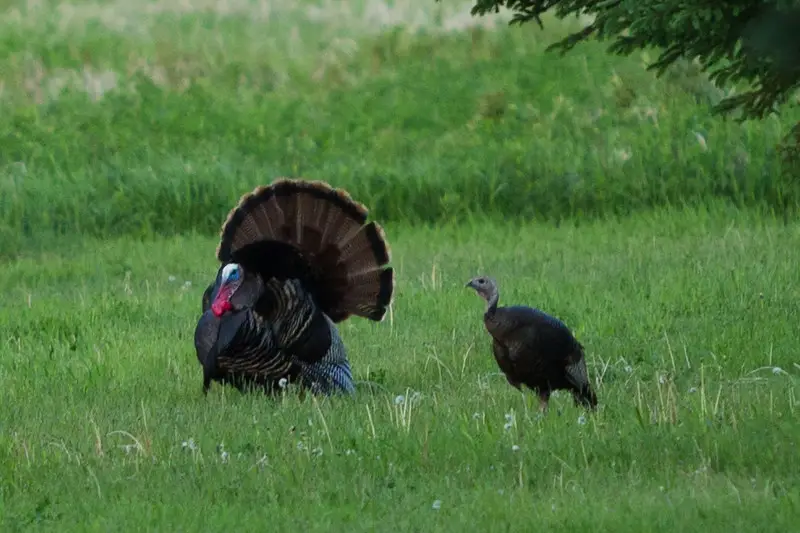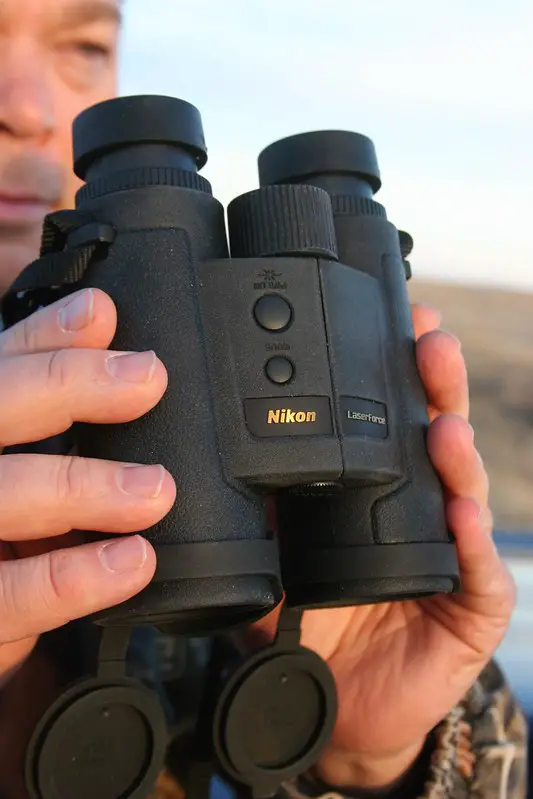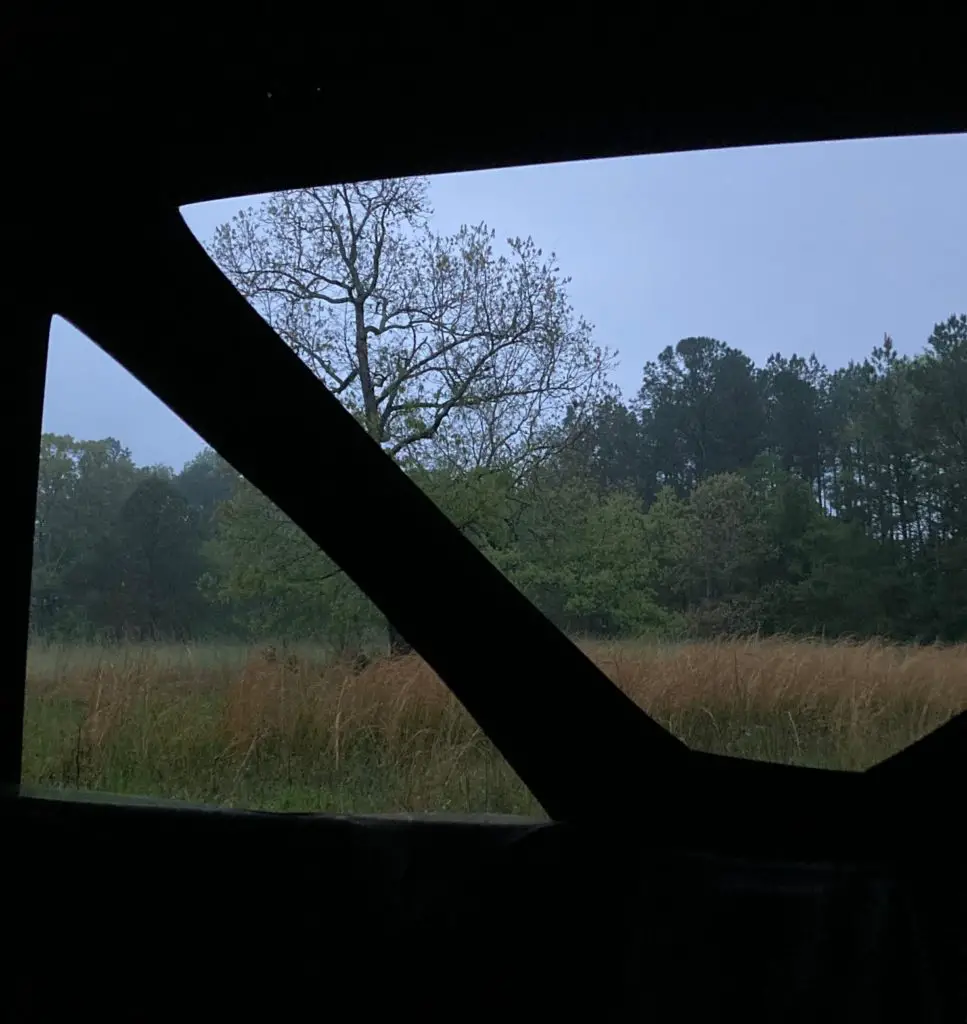
It’s highly effective. It’s highly controversial. It can be dangerous. It can be exciting. It can be legal. It can be illegal.
What in the world am I talking about?
Turkey reaping (or turkey fanning) is a hunting tactic that has become increasingly popular over the past few years. In fact, manufacturers are now making decoys just for the purpose.
If you are unfamiliar with reaping, I will explain it and show you how to do it.
If you are familiar with it, scroll down further to read about the legal and ethical implications of the practice.
Finally, I will go over some of the best turkey reaping decoys on the market.
What is reaping and fanning?
Turkey reaping is the practice of approaching a turkey behind a decoy or turkey fan. Generally, an aggressive tom will see you approaching him or his hens and think you are a challenger.
As you close the distance on the tom, he may charge you aggressively. This technique usually results in point-blank shots on the dominant tom.
Many people believe that the Native Americans used fanning to kill turkeys. It began regaining popularity in the mid-2010s.
How do you reap a turkey?
To reap a turkey, you will need either a turkey fan or a decoy. Some people use a real turkey fan that they took from a previous harvest. Others will use a decoy (I will tell you about two of the best turkey reaping decoys at the end of this article). Still, others will use a hybrid of the two and attach real feathers to a decoy.
All of these can be effective. I tend to think the real feathers coupled with the convenience of a decoy made for the purpose is the best. The most important thing is that you have it accessible when the time is right for fanning.
Turkey reaping generally takes place in open fields. You need to spot a tom turkey out in the open.
Once you’ve spotted a tom, grab your gun and your decoy. Hold the decoy out in front of you and try to keep your body hidden behind it as much as possible.
Some people will crawl. Others duck walk or walk on their knees. Choose a method that comes easiest to you. You need to be able to shift your gun up for a shot when the time comes.
Unlike other turkey hunting methods, you are not trying to hide from the tom. In fact, you want to get out in the open where the tom can see you coming. Think aggressively. You’re a show-off, punk teenager trying to steal some girls.
When the tom gets close enough to shoot, drop your fan or plant the decoy in the ground. Make sure the shot is clear and take it.

Photo courtesy of Hunting Mark on Flickr
Is turkey reaping safe?
Because you are trying to imitate the actual game that other hunters are pursuing, turkey reaping can be dangerous. With the realism of today’s decoys, you can be mistaken for another tom not just by your target turkey, but by another hunter.
However, there are some things you can do to make turkey fanning safer.
If possible, have a spotter with you while you are reaping. This person can stand back from the action and watch you approach the live turkeys. Hopefully, they will also see other hunters approaching.
Remember that your spotter may not be able to see everything, but it is an additional layer of protection. If your spotter sees another hunter approaching, he or she needs to go crazy yelling, waving, and doing anything necessary to make you and the other hunter aware of the situation. Yes, it will probably scare the turkey, but remember that no turkey is worth losing your life over.
Turkey reaping is safer on land that you know you have exclusive hunting rights on. You never know who all is accessing public land (and they don’t know you). Private hunting clubs may not be much better if there are multiple hunters hunting the land at the same time.
Even if you have exclusive access, remember that there may be trespassers or neighbors who aren’t aware of the property lines.
Do not stalk turkeys that you hear but don’t see. Also, be sure to positively identify your turkeys as live, legal game before you begin your stalk. You don’t want to reap someone else’s decoys.
When you go to shoot your turkey, the action will likely happen fast. Beware of what is behind your target. You don’t want to shoot a person, other wildlife, livestock, or something of value accidentally.
Is turkey reaping legal?
To my knowledge, turkey reaping is legal in 45 of 49 of the states with a turkey season.
Turkey reaping is illegal in Michigan, New Jersey, Pennsylvania, and Rhode Island. It is legal on private land in South Carolina but banned on public land.
Be sure to check your regulations before hunting as more and more states may begin making the practice illegal because of the safety and biological implications of the technique.
Is turkey fanning ethical?
Now let’s cover a more controversial topic. If turkey reaping is legal and you feel safe doing it, is it an ethical method for taking a turkey?
Many hunters believe that turkey reaping is too easy. There is little to no skill required to kill a turkey by sneaking up on him from behind a decoy. Toms that were previously “unkillable” because they were always with hens or way out in a field are now very killable. It has become turkey shooting rather than turkey hunting.
Is turkey reaping just another tool that has made hunting a bit easier or an unsportsmanlike practice? Camouflage clothing, turkey calls, decoys, pop-up blinds, TSS ammunition. How far is too far when it comes to technology and hunting?
Then there are the biological implications of turkey hunting. Mike Chamberlain, a researcher for the University of Georgia, believes that killing the dominant bird (which reaping often results in), messes up the breeding cycle of the wild turkey.
If the dominant tom is killed, it may take a hen some time to find another suitable mate. Sub-dominant birds may not fit the bill or they may not have the testosterone levels to breed the hen. This can delay laying and nesting for these hens.
For me, this is the biggest strike against reaping. While I don’t believe it is my place to tell someone that they can’t do something that is within their legal rights to do, I personally do not wish to fan turkeys. I think there are enough concerns about turkey populations and reproduction to play it cautiously for now.
What is the best turkey reaping decoy?
There are two decoys specifically designed for turkey fanning that I would consider the best turkey reaping decoys. Read on for the pros and cons of each.

MOJO Scoot-N-Shoot MAX
The MOJO Scoot-N-Shoot MAX is one of the best turkey reaping decoys. It is super realistic whether you use the included artificial fan and wings or you remove them to add your own real fan and wings.
A good handle and stake make this decoy easy to handle in the field. There is also a window in the artificial fan to look through as you approach the gobbler while remaining hidden behind the decoy.
One thing I don’t like about it is that you can’t fold it up. That means you are less likely to have it on you when you need it because it is not as easy to store in a vest or vehicle.
This decoy does have some versatility as you can easily use it with some hen decoys to set up a calling scenario.
If you’re looking for a hands-free decoy, check out the Gunner version which mounts to your shotgun.

Montana Decoy Fanatic Reaping Decoy
The Montana Decoy Fanatic Reaping Decoy is 2D which is actually advantageous for several reasons. The first is that it is lightweight for long stalks on toms. The second is that it folds up compactly so that you will be sure to have it with you when you need it.
The high-definition picture looks very realistic. Like the MOJO Scoot-N-Shoot, it also offers a little window you can see through.
If you plan to stake this in the ground and use it in a traditional decoy setup, it’s probably not as good an option as the MOJO. However, if you want something quick to deploy and easy to carry, this is your choice.
Conclusion
It will be interesting to see if turkey reaping continues to grow in popularity or if it becomes illegal in more and more states. As more and more research is done on turkeys, I expect more legislation to be passed on this technique.
For now, if you are hunting in a state where it is legal and you feel comfortable, you are more than welcome to try it out. If you do, be sure to choose a quality decoy and be safe!
If you enjoyed this article, you may also like reading my article about how to roost turkeys.


